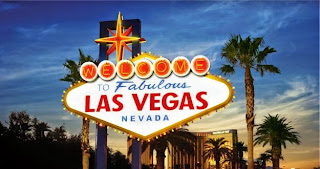A long-time summer holiday favourite for farming families and Melbourne high-flyers, this little gem of a town is famous for its annual folk festival. Port Fairy is popular with surfers, fishermen, cyclists and, increasingly, gourmets and luxury seekers.
 |
| Port Fairy is a tranquil spot |
Around 290 kilometres west of Melbourne, at the point where the Moyne River enters the Southern Ocean, Port Fairy and is home to over 50 19th-century buildings classified by the National Trust.
With a population of under 3,000, it is the home port for one of Victoria's largest fishing fleets and has been named as one of the world's most liveable small cities.
It is also increasingly popular with lovers of fine food and wine with dining options ranging from the atmospheric Merrijig Kitchen (with one of Australia's most intriguing country wine lists); The Stag, L'Edera, Bella Claire, pizzas and cocktails at newcomer Coffin Sally or maybe a beer or two at The Caledonian Inn, the oldest continually licensed hotel in Victoria.
At the Merrijig Kitchen sample delights like Skipton smoked eel on oatcakes with kimchi and labna; grilled quail marinated in miso with daikon salad, local abalone and crispy quail; and maybe char-grilled lamb shoulder with a cous cous salad and cabbage roll. Hearty, satisfying and clever food.
And just outside town is the Basalt Wines cellar door, which serves brilliant little tapas-style meals.
Now Port Fairy also has accommodation to satisfy even the fussiest of travellers; the adults-only luxury guest house known as Drift House.
This beautifully restored old home just a block from the water with four luxurious suites in different styles. It is beautifully furnished and equipped (think a maxibar of gourmet treats rather than a mini bar) and within walking distance of all the restaurants and pubs.
Opened in December 2013, it is part boutique hotel, part bed and breakfast, part furnished apartment with colourful motifs, salvaged timber and bathrooms decorated with Japanese tiles.
I stayed in suite one, which occupies the entire ground floor of the original bluestone building and has exclusive use of the verandah spanning the front of the property.
This is just perfect for a weekend away with a loved one; featuring an open fire place, sexy bathroom with shower, solid stone bath and king-sized bed, along with kitchen facilities, a relaxing lounge area and that maxi bar with local treats. Fast wi-fi is complimentary and each suite also has a TV, DVD player, radio, iPod dock, bathrobes and coffee machine. Drift House is like a mini five-star hotel with personality.
A breakfast hamper with eggs, bread, yoghurt and muesli, (dropped off each morning) is a great way to start the day and it is hard to resist the yo-yo biscuits found in each suite.
There are some nice personal touches from the owners. too, like personal notes listing their favourite local eateries and attractions.
While the front of the house has an 1850s Victorian facade, the building is a clever mix of old and new - and there's an outdoor pool for summer days - although the beach is just a short walk away.
Drift House was recently the winner of the best luxury accommodation award at the RACV Victorian Tourism Awards for 2014.
Drift
House, 98 Gipps Street, Port Fairy. 0439 969 281.
www.drifthouse.com.au. Rates start from $345 per night with a special offer of a free bottle of local Basalt riesling or pinot noir for those booking through the Mr and Mrs Smith website. www.mrandmrssmith.com.























